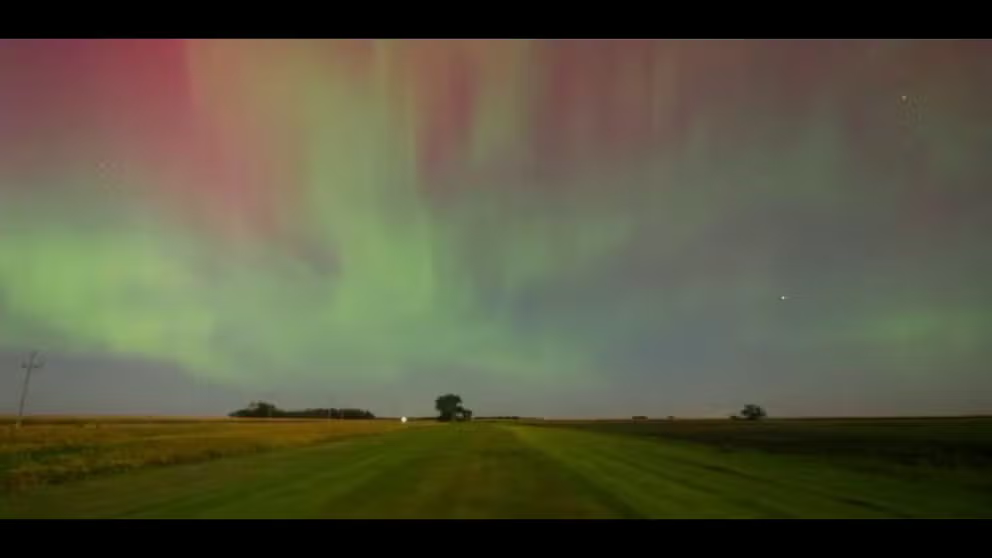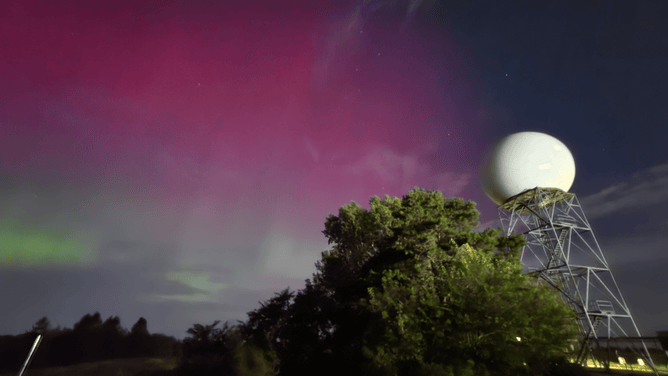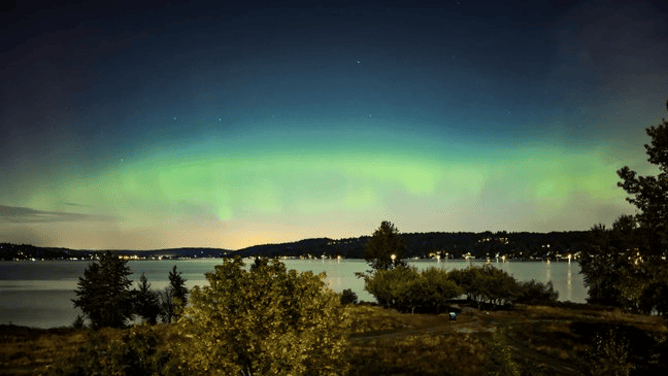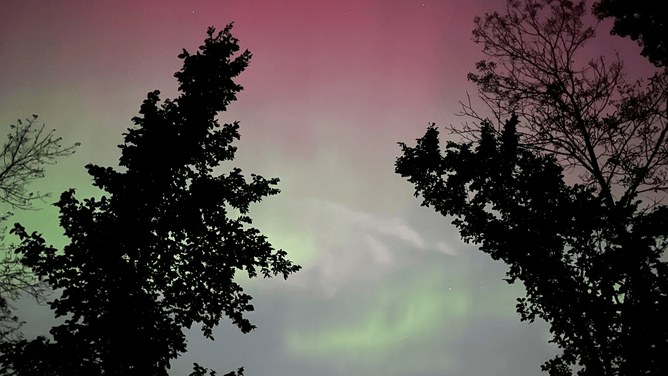'Severe' geomagnetic storm produces Northern Lights over Lower 48
NOAA’s Space Weather Prediction Center issued the “severe" (G4) geomagnetic storm alert at 10:57 p.m. ET Monday night and said there could be another period of G4 conditions Tuesday night.
Geomagnetic Storm produces dazzling Northern Lights display
Northern Lights dance over Graceville, Minnesota on Sept. 16, 2024. Courtesy: Carolbauer320/X
Parts of Minnesota, Wisconsin, Washington and several other states in the Lower 48 were treated to a beautiful aurora show Monday night amid a "severe" (G4) geomagnetic storm.
Charged particles crashed into Earth creating strong solar storm conditions Monday, prompting a Geomagnetic Storm Watch as the Northern Lights were expected to be visible farther south than usual after sunset.
NOAA’s Space Weather Prediction Center (SWPC) rates solar storms on a five-level scale, with five being the most extreme and rarest space weather conditions.
THESE ARE THE 5 CATEGORIES THAT MEASURE GEOMAGNETIC STORMS
Chance for a similar Northern Lights display Tuesday night
A geomagnetic storm happens when a barrage of electrons smashes into Earth following a solar event like a coronal mass ejection. These interactions can cause problems with the power grid and satellites, but the public does not need to worry. A positive consequence of a solar storm is that these electrons interact with particles in Earth’s magnetic field, creating vivid displays known as the Aurora Borealis, also known as the Northern Lights.
The SWPC issued the "severe" (G4) geomagnetic storm alert at 10:57 p.m. ET Monday night and said there could be another period of G4 conditions Tuesday night.
These stronger geomagnetic storms are less common than G1 or G2 events. However, Earth experienced near-global auroras in May, even as far south as Florida, when an "extreme" (G5) geomagnetic storm occurred because of two groups of extremely active sunspots.
Northern Lights were seen as far south as Las Vegas last week
Those up early last Thursday during another "strong" geomagnetic storm were likely surprised to see Northern Lights in parts of the Northwest and across the northern U.S.
The National Weather Service in Marquette, Michigan, shared this dazzling display of lights taken around 4:30 a.m. ET last Thursday morning.
Northern Lights were even seen as far south as California and southern Nevada, including on the Bureau of Land Management cameras near Angel Peak.
7 FACTS ABOUT THE NORTHERN LIGHTS
Despite the wildfire smoke in the region, the National Weather Service in Elko, Nevada, had a good view of the Northern Lights last Thursday morning.

Aurora lights seen over Elko, Nevada on Sept. 12, 2024.
(NWS Elko / X)



